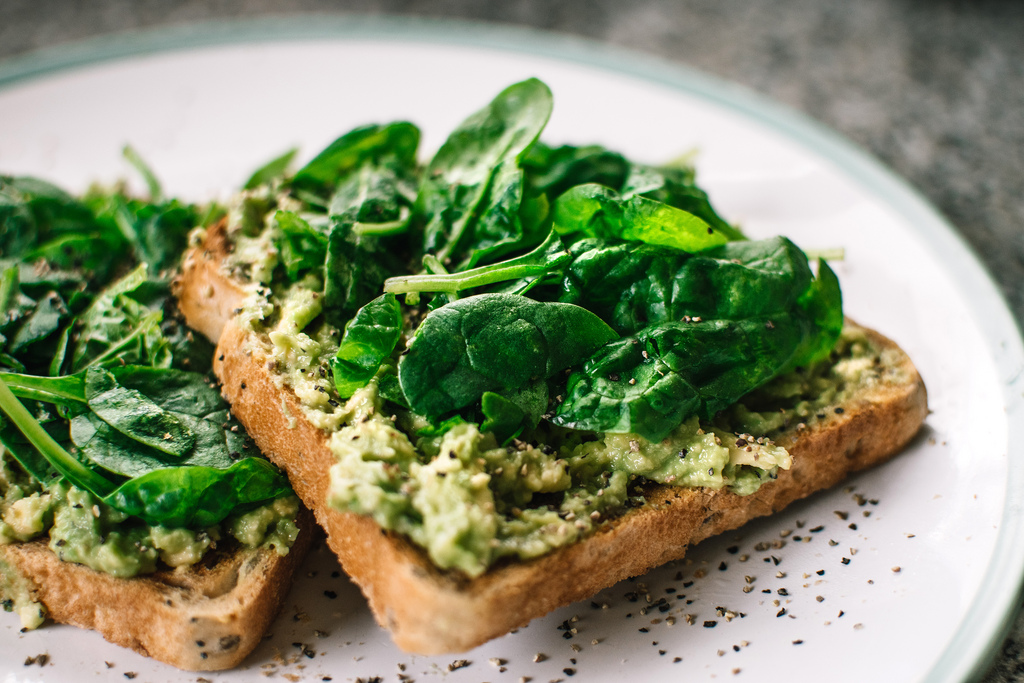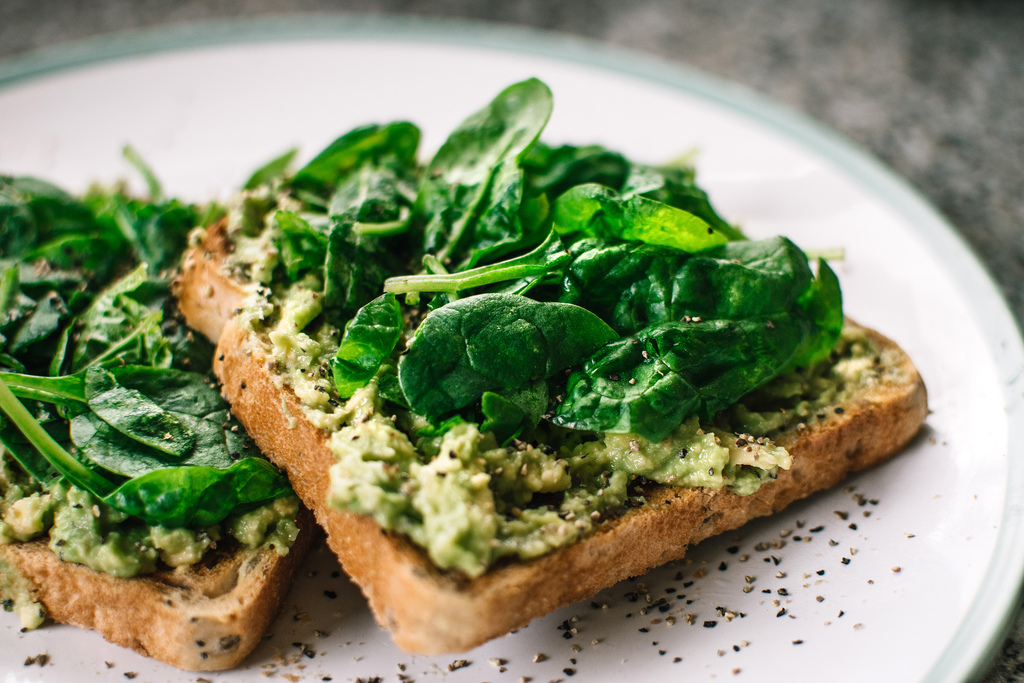The content of lutein in spinach ranks first! Take care of Taiwan's agriculture as well as the eyes
Share +1 Tweet Email
Eat lutein without relying on health care products, in the natural spinach which can be ingested! March, April is the season of spinach, spinach is rich in lutein, nutritionist Wu Yingrong said, lutein can resist the blue light that hurts the retina, has the value of protecting the eyes, and as long as you understand the nutritional value contained in various foods,"more intake of some correct fruits and vegetables, do not have to rely on health food"!
Dai Zhenyang, associate researcher of the Crop Improvement Division of the Taichung District Agricultural Improvement Farm, also said,"Dark green vegetables usually have more lutein content." Wu Yaoyu, secretary general of the Agricultural Association of Yunlin Erlun, which has the largest spinach planting area in Taiwan, says that spinach production season only lasts until mid-April, and now is the best time to supplement natural lutein!


photo credit: davidstewartgets Avocado bread breakfast – Credit to https://homegets.com/ via photopin (license)
Spinach lutein content first place, cooked nutrients do not lose
Wu Ying-jung, CEO of the Taiwan Nutrition Foundation, has written a book explaining that beta-carotene, lutein and zeaxanthin in fruits and vegetables are all phytochemicals that are very important for eye protection. Spinach ranked second in beta-carotene content and first in lutein and zeaxanthin.
She explained that lutein is like "sunglasses in the eye" to block blue light that hurts the retina, while lutein cannot be synthesized by the body itself and must be ingested through diet. Spinach in season is a good source of intake. Romaine lettuce, leaf lettuce and cauliflower are dark green vegetables high in lutein.
She further recommends that adults eat about two to three servings of dark green vegetables per day, which is more adequate for lutein intake. In addition, lutein is oil-soluble, meaning that it will not be reduced too much because of cooking, so there is no need to worry about "cooked, lutein will be lost".
Taiwan spinach area 1568 hectares, Yunlin accounted for 60 percent
Spinach grows mainly from November to March or April in early spring. According to the statistics of the Agriculture and Food Administration of the Council of Agriculture, the planting area of spinach in Taiwan is about 1,568 hectares, of which Yunlin County is the largest planting area with 911 hectares, followed by Kaohsiung City with 251 hectares and Taoyuan City with 174 hectares, mainly supporting the spinach production period from November to April.
Wu Yaoyu says that Erlun and Xiluo are big spinach growing towns. Spinach grows for about 35 to 40 days. From November to mid-April, it can be harvested about four or five times. Spinach, he explained, is a crop that likes cool weather and doesn't need too much water. Dew fungus disease is the most important disease of spinach. It rains continuously at the beginning of March, and the temperature is hot. At this time, it is the season when dew fungus disease is easy to occur. It is also easy to have rotten roots due to rain, resulting in low yield of spinach in the near future and a slight increase in market price.
Autumn is best for sowing, cold weather and short sunshine are best
Dai Chen-yang, an associate researcher in Taiwan's Crop Improvement Division, says that if organic spinach is grown, it is recommended that the seeds be sterilized with hot water at about 50 degrees Celsius to reduce the number of pathogens remaining on the seeds.Another suggestion is to harvest early to avoid raining in March or April, when dew disease is most common.
Dai further explains that spinach is suitable for growing conditions with the precautions noted. "Cold weather and short sunshine" are the best conditions for growing spinach, so autumn is the best time to plant, he said. If there is still spinach supply in the summer market, it is because of the cultivation in the high mountain areas, and a small amount of spinach can be produced and supplied, mainly in the areas near Pear Mountain.
Two major varieties of spinach in China: native species and Japanese 888
As for the varieties of spinach planted in China, Dai Zhenyang said that the two major varieties of spinach planted in China are "native species" and "Japan 888". The leaves of the native species are relatively round in shape, while the leaves of the Japanese 888 variety are relatively sharp, and compared with the native species, they sprout later and grow longer, which can regulate the supply of spinach. The appearance is also greener, and "gives people a better taste." It is a popular spinach variety in recent years.
Dai Zhenyang explained that vegetables with darker colors usually have relatively high chlorophyll content. In addition, there is a variety of "sweet spinach" that can be eaten raw as a salad without the "astringency" of ordinary spinach. He said that this variety may have a small amount of cultivation in China, but at present it is not large enough, and may be mostly imported from abroad.
Share +1 Tweet Email
- Prev

Farmers criticized the "chaos of pineapples". False news killed good pineapples, and the Council of Agriculture subsidized pineapple processing for 8 yuan per kilogram.
Farmers criticized the "chaos of pineapples". False news killed good pineapples, and the Council of Agriculture subsidized pineapple processing for 8 yuan per kilogram.
- Next

Chen Jizhong, chairman of the Council of Agriculture: the purchase price of pineapple is 8 yuan per kilogram.
Affected by the warm winter rain, the price of Fengli in Chiayi County is not beautiful. Chen Jizhong, chairman of the Council of Agriculture, went south to discuss with farmers on March 18 and ruled that from the afternoon of the 18th, the guaranteed purchase price of inferior products per kilogram was 8 yuan (4.8 yuan per jin), and the fruit growers applauded.
Related
- A course of planting techniques and methods on how to grow carrots
- How to plant the latest tulips?
- Is it better to pick tea in the morning or in the afternoon? When is the best time for tea to be picked? what is the third or fifth tea?
- Launch Yuanxiao Happy combination Haocha + Tea Yuan healthy Taste
- Penghu Tourism "Fireworks 20 Parade with You"
- 2022 West Lake Happiness holds "Digital Revitalization Voucher" and draws iphone13 and laptop.
- Banqiao Fuzhou social houses are designed to change start-up combined with police elimination to create a safe and livable environment
- The convenient measure of "mechanical weeding" in Xinbei has been abused and the Agriculture Bureau has imposed heavy penalties on the illegal land consolidation.
- Changgeng University Joins Hands with Four Memory Factories to Rescue Memory Talent Shortage
- The list of Taiwan's top 100 MVP managers is listed by the Director-General of the Farmers' Association of Sanxia District.

